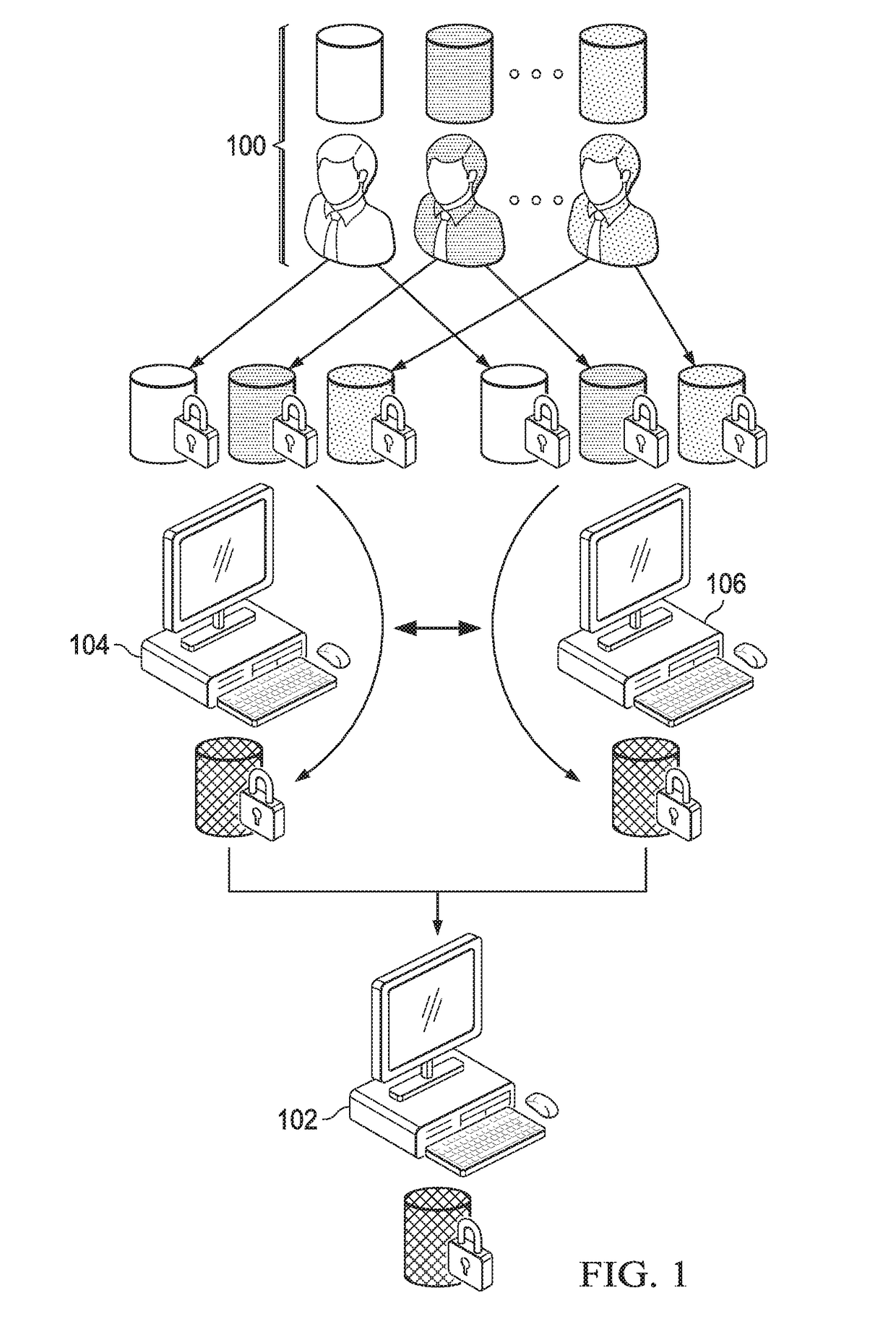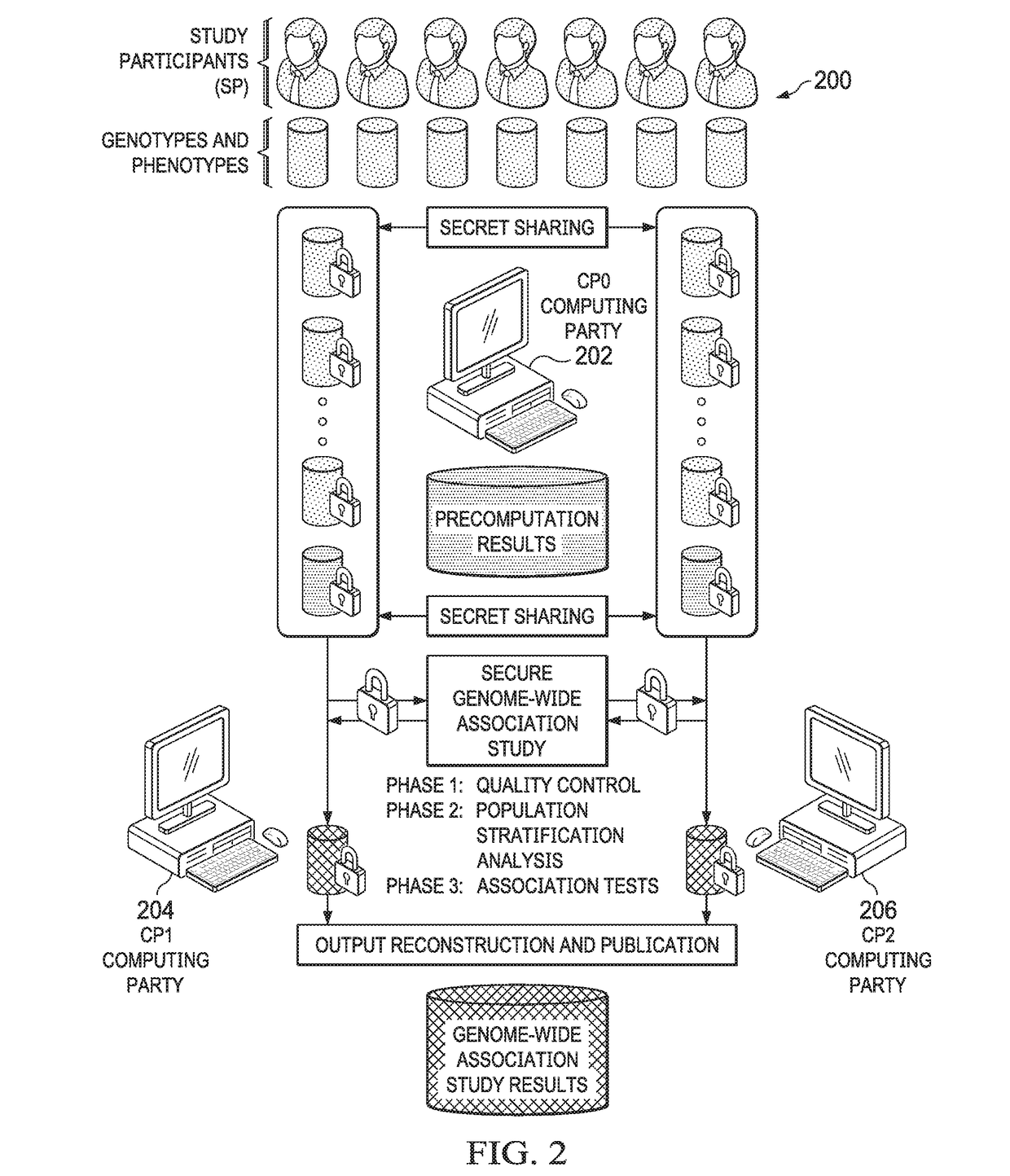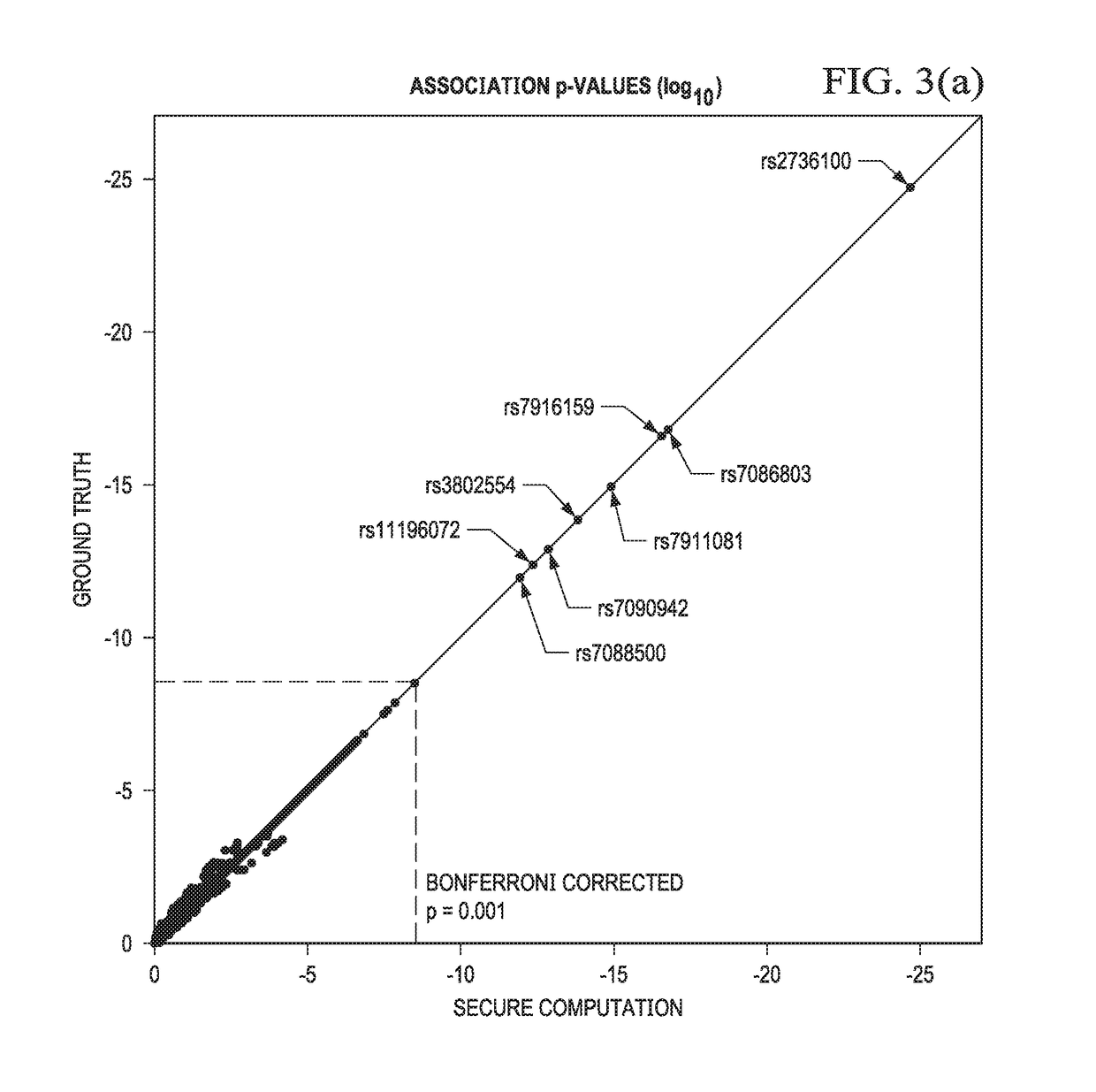Secure genome crowdsourcing for large-scale association studies
a large-scale association study and secure technology, applied in the field of biomedicine, can solve the problems of affecting the privacy of individuals whose data is released, and the breach of genomic and clinical data becoming increasingly probable, so as to facilitate secure crowdsourcing of genomics and preserve the privacy of individual genomic and phenotypic data. the effect of privacy protection
- Summary
- Abstract
- Description
- Claims
- Application Information
AI Technical Summary
Benefits of technology
Problems solved by technology
Method used
Image
Examples
Embodiment Construction
[0040]The technique herein provides for a secure multiparty communication protocol for GWAS that accounts for population stratification while achieving practical performance at scale. Several technical advances enable this breakthrough. First, a core multiparty computation (MPC) technique known as Beaver triples, which was initially developed for pairwise multiplications, is generalized to arbitrary arithmetic circuits. The generalized method is used to construct efficient subroutines for matrix multiplication, exponentiation, and iterative algorithms with data reuse. Second, random projection techniques are then provided to significantly reduce the complexity of a Principal Component Analysis (PCA) procedure, e.g., during a population stratification analysis.
[0041]In one embodiment, the overall workflow of our MPC protocol is illustrated in FIG. 1. In addition to individuals or institutions 100 with privately-owned or controlled genomes and phenotypes (referred to as study particip...
PUM
 Login to View More
Login to View More Abstract
Description
Claims
Application Information
 Login to View More
Login to View More - R&D
- Intellectual Property
- Life Sciences
- Materials
- Tech Scout
- Unparalleled Data Quality
- Higher Quality Content
- 60% Fewer Hallucinations
Browse by: Latest US Patents, China's latest patents, Technical Efficacy Thesaurus, Application Domain, Technology Topic, Popular Technical Reports.
© 2025 PatSnap. All rights reserved.Legal|Privacy policy|Modern Slavery Act Transparency Statement|Sitemap|About US| Contact US: help@patsnap.com



